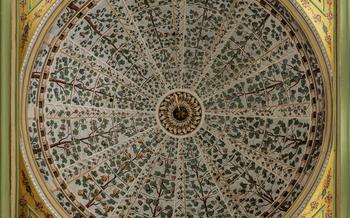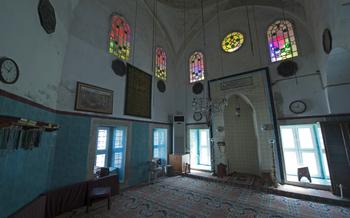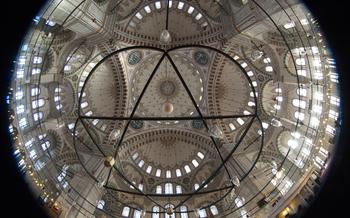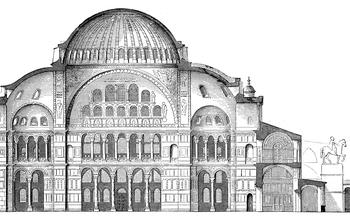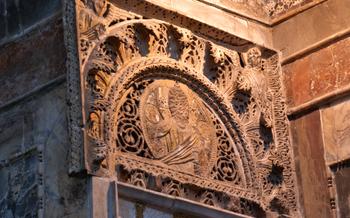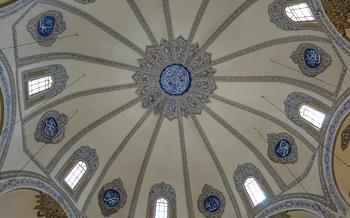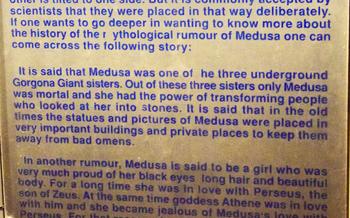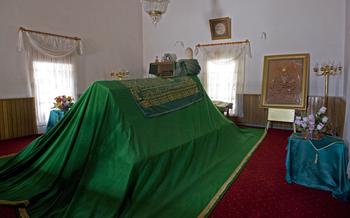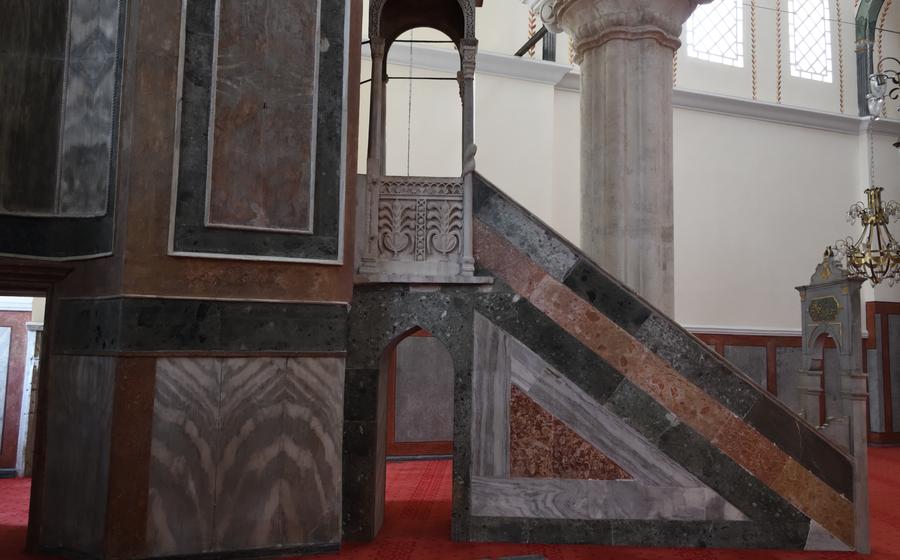
Zeyrek Mosque
- Zeyrek Mosque: A Hidden Gem of Istanbul
- Historical Significance
- Architectural Marvel
- Unique Features
- Location and Surroundings
- Visiting Hours and Admission
- Exploring the Mosque's Interior
- Climbing the Minaret
- Visiting the Madrasah and Library
- Exploring the Caravanserai
- Taking a Guided Tour
- Photography Tips
- Shopping and Dining Nearby
- Insider Tip: Hidden Courtyard
Zeyrek Mosque: A Hidden Gem of Istanbul
In the heart of Istanbul's historic Fatih district, nestled amidst bustling streets and ancient landmarks, lies a hidden gem that captivates visitors with its architectural splendor and rich history. The Zeyrek Mosque, a former Byzantine church transformed into an Ottoman masterpiece, stands as a testament to Istanbul's diverse cultural heritage and enduring faith. With its impressive dome, towering minaret, and intricate tilework, the Zeyrek Mosque invites travelers to step back in time and explore the layers of history that have shaped this vibrant city.
The Zeyrek Mosque, also known as the Pantokrator Monastery, was originally built in the 12th century by Emperor John II Komnenos as a Greek Orthodox church dedicated to Christ the Pantocrator. Over the centuries, the church underwent several modifications and additions, reflecting the changing political and religious landscape of Istanbul. After the Ottoman conquest of the city in 1453, the church was converted into a mosque and renamed the Zeyrek Mosque. The mosque's transformation from a Christian sanctuary to an Islamic house of worship symbolizes the cultural and religious exchanges that have occurred throughout Istanbul's history.
Today, the Zeyrek Mosque stands as a magnificent example of Byzantine and Ottoman architecture, blending the best of both worlds. Its unique features, such as the presence of a madrasah, library, and caravanserai within the complex, set it apart from other mosques in Istanbul. The mosque's association with the Mevlevi Order of Sufis adds another layer of cultural significance, making it a site of spiritual and artistic convergence.
Historical Significance
The Zeyrek Mosque holds immense historical significance, having witnessed the evolution of Istanbul from a Byzantine metropolis to an Ottoman capital. Originally built in the 12th century as the Monastery of the Pantokrator, the magnificent structure served as a prominent religious center for the Byzantine Empire. During this period, the monastery played a crucial role in fostering education and scholarship, housing a renowned library and a theological school.
In the mid-15th century, following the Ottoman conquest of Constantinople, the monastery underwent a transformation, becoming the Zeyrek Mosque. This conversion marked a significant chapter in Istanbul's religious history, as the city transitioned from predominantly Christian to predominantly Muslim. The mosque's architecture reflects this transition, blending Byzantine and Ottoman elements to create a unique and harmonious edifice.
Over the centuries, the Zeyrek Mosque has undergone several renovations and restorations, each contributing to its rich and layered history. It has survived earthquakes, fires, and the passage of time, standing as a testament to the resilience and cultural heritage of Istanbul. Today, the mosque remains an active place of worship, attracting both local residents and visitors from around the world who come to admire its architectural splendor and delve into its historical significance.
Architectural Marvel
The Zeyrek Mosque stands as a testament to the fusion of Byzantine and Ottoman architectural styles, creating a unique and captivating structure. The mosque's most striking feature is its impressive dome, which towers over the surrounding buildings. The dome's intricate patterns and vibrant colors are a testament to the skill of the Ottoman architects.
Another notable feature of the mosque is its minaret, which rises elegantly from the corner of the building. The minaret's slender form and delicate ornamentation add a touch of grace to the mosque's overall design. The courtyard of the mosque is a serene space, surrounded by arcaded walkways and adorned with beautiful tilework. The courtyard provides a tranquil oasis amidst the bustling city, inviting visitors to pause and reflect.
The mosque's interior is adorned with intricate tilework, calligraphy, and decorative elements that showcase the artistry of the Ottoman period. The walls and ceiling are covered in vibrant tiles, each one carefully arranged to create complex geometric patterns. The calligraphy adorning the mihrab, the niche indicating the direction of Mecca, is particularly impressive, showcasing the beauty of the Arabic script.
Unique Features
The Zeyrek Mosque stands out from other mosques in Istanbul due to its unique characteristics. One notable feature is the presence of a madrasah, library, and caravanserai within the complex. These structures served various purposes and contributed to the mosque's role as a religious and educational center. The madrasah provided Islamic education to students, while the library housed a collection of valuable manuscripts and books. The caravanserai, once a resting place for travelers and merchants, has been transformed into a cultural center, hosting exhibitions and events.
Another unique aspect of the Zeyrek Mosque is its association with the Mevlevi Order of Sufis. The Mevlevi Order, founded by the renowned Sufi mystic Rumi, is known for its practice of the Sema ritual, a spiritual dance performed by whirling dervishes. The Zeyrek Mosque occasionally hosts Mevlevi Sema ceremonies, offering visitors a chance to witness this mesmerizing and spiritually uplifting performance.
The mosque's courtyard also offers a unique experience. Visitors can admire the stunning views of the city's skyline, including landmarks like the Hagia Sophia and the Bosphorus Strait. The courtyard also features a tranquil fountain, providing a serene atmosphere conducive to contemplation and reflection.
Location and Surroundings
The Zeyrek Mosque enjoys a prime location in the heart of Istanbul's historic Fatih district. This vibrant neighborhood is a treasure trove of historical and cultural landmarks, making it an ideal base for exploring the city. In the vicinity of the mosque, visitors can marvel at the architectural grandeur of the Chora Church, with its stunning Byzantine mosaics. A short walk away, the Süleymaniye Mosque, a masterpiece of Ottoman architecture, stands as a testament to the city's rich Islamic heritage. The labyrinthine alleys of the Grand Bazaar, one of the oldest and largest covered markets in the world, offer a unique shopping experience, where visitors can haggle for carpets, jewelry, and traditional Turkish handicrafts.
The Zeyrek Mosque is easily accessible by public transportation, with several tram and bus lines stopping nearby. Guided tours of the mosque and the surrounding area are also available, providing visitors with in-depth insights into the history, architecture, and significance of this hidden gem. Whether exploring the neighborhood's historical sites, shopping for souvenirs, or savoring delicious Turkish cuisine at local restaurants, the Zeyrek Mosque's surroundings offer a captivating blend of history, culture, and vibrant city life.
Visiting Hours and Admission
The Zeyrek Mosque welcomes visitors during specific hours each day, allowing them to explore its architectural splendor and spiritual significance. The mosque is open to the public from 9:00 AM to 6:00 PM, providing ample time to delve into its history and admire its intricate details. Admission to the mosque is free of charge, allowing everyone the opportunity to experience its beauty and serene atmosphere. However, visitors are expected to dress modestly and behave respectfully within the mosque's sacred space. To avoid crowds and capture the best photographs, it is advisable to visit the mosque early in the morning or during the late afternoon, when the lighting is most favorable.
Exploring the Mosque's Interior
Stepping inside the Zeyrek Mosque, visitors are greeted by a breathtaking spectacle of architectural splendor. The main prayer hall, with its soaring dome and graceful arches, exudes an aura of awe and serenity. The intricate tilework adorning the walls and ceiling captivates the eye with its vibrant colors and geometric patterns. Verses from the Quran, beautifully calligraphed in Arabic script, add to the spiritual atmosphere of the mosque.
The mihrab, a niche indicating the direction of Mecca, is a focal point of the prayer hall. Its exquisite ornamentation, featuring intricate carvings and colorful tiles, highlights the craftsmanship and attention to detail that went into the mosque's construction. The minbar, a raised platform used by the imam to deliver sermons, is another notable feature of the interior. Its elegant design and intricate woodwork contribute to the mosque's overall aesthetic appeal.
As visitors explore the mosque's interior, they can't help but feel a sense of peace and tranquility. The soft light filtering through the stained-glass windows casts a warm glow on the surroundings, creating an atmosphere conducive to contemplation and worship. The Zeyrek Mosque stands as a testament to the rich cultural heritage of Istanbul, blending Byzantine and Islamic influences into a harmonious masterpiece of architecture and spirituality.
Climbing the Minaret
For those seeking a breathtaking perspective of Istanbul, the Zeyrek Mosque offers the opportunity to climb its minaret. The narrow staircase leading to the top may be challenging, but the panoramic views that await are well worth the effort. From the minaret's vantage point, you can feast your eyes on the city's iconic landmarks, including the Hagia Sophia, the Blue Mosque, and the Bosphorus Strait. As you gaze out over the cityscape, the grandeur of Istanbul unfolds before you, revealing a tapestry of history and culture.
Before embarking on your ascent, remember that the minaret is not always open to visitors. It's advisable to inquire at the mosque's entrance about the availability and any restrictions. Additionally, the climb requires a certain level of fitness and agility, as the staircase is steep and narrow. For safety reasons, visitors with health conditions or limitations may want to consider alternative ways to enjoy the mosque's beauty.
Once you reach the top of the minaret, you'll be rewarded with unparalleled views of Istanbul. The city's architectural wonders, the bustling streets, and the shimmering waters of the Bosphorus will stretch out before you, creating a mesmerizing panorama. Take a moment to soak in the beauty and capture the memories with your camera.
Remember to prioritize safety throughout your climb. Wear comfortable shoes and be mindful of your footing. The narrow staircase may require you to proceed slowly and carefully. As you descend, ensure you maintain a steady pace and hold onto the handrails for support. By following these guidelines, you can safely enjoy the unique experience of climbing the Zeyrek Mosque's minaret and revel in the breathtaking views that await you.
Visiting the Madrasah and Library
The Zeyrek Mosque complex also includes a madrasah, or Islamic school, and a library, both of which are open to visitors. The madrasah was once a center of Islamic learning, and its classrooms and lecture halls are still well-preserved. The library houses a collection of over 5,000 manuscripts and books, including rare and valuable works on Islamic theology, law, and history. The architectural features of the madrasah and library are also noteworthy, with intricate tilework, calligraphy, and carved wood decorations adorning the walls and ceilings. These spaces offer a glimpse into the rich tradition of Islamic education and scholarship that flourished in Istanbul during the Ottoman period.
Exploring the Caravanserai
Within the Zeyrek Mosque complex lies a fascinating remnant of a bygone era - a caravanserai. Caravanserais were essential structures along trade routes, serving as resting places for weary travelers and their caravans. This particular caravanserai, built during the Ottoman period, played a crucial role in facilitating trade and travel between Istanbul and other parts of the empire.
The caravanserai, now transformed into a cultural center, retains its historical charm. Its courtyard, once bustling with merchants and animals, now hosts cultural events and exhibitions. Visitors can explore the architecture, marveling at the sturdy walls and arched entrances that once sheltered travelers. The caravanserai's transformation into a cultural center breathes new life into its history, showcasing the rich tapestry of Istanbul's past.
Taking a Guided Tour
Exploring the Zeyrek Mosque on your own can be rewarding, but joining a guided tour offers unique benefits. Knowledgeable guides provide insights into the mosque's rich history, architectural features, and cultural significance. They can point out hidden details and share stories that bring the mosque to life. Guided tours also help you navigate the complex more efficiently, avoiding crowds and ensuring you see all the essential parts.
When choosing a tour operator, look for reputable companies with experienced guides. Read reviews and compare prices to find the best option for your needs. Advance booking is recommended to secure your spot, especially during peak tourist season.
Guided tours typically cover the mosque's main prayer hall, the madrasah, the library, and the caravanserai. The guides will explain the historical context, architectural styles, and religious practices associated with each space. They may also offer insights into the Mevlevi Order and the Sema ceremony if it's being performed during your visit.
Taking a guided tour of the Zeyrek Mosque is an excellent way to gain a deeper understanding and appreciation of this hidden gem. Whether you're a history buff, an architecture enthusiast, or simply curious about Istanbul's rich cultural heritage, a guided tour will enhance your experience and leave you with lasting memories.
Photography Tips
Capturing the essence of the Zeyrek Mosque through photography requires careful consideration of angles, lighting, and respect for the sacred space. To capture the mosque's grandeur, position yourself at a distance that allows you to encompass its entire facade, highlighting its intricate details and symmetry. For interior shots, focus on the intricate tilework, calligraphy, and architectural features that adorn the walls, ceiling, and mihrab.
Utilize natural light to your advantage. The mosque's interior is illuminated by soft, diffused light that enhances the beauty of its features. Avoid using flash photography, as it can create harsh shadows and reflections that detract from the mosque's serene atmosphere. Instead, adjust your camera settings to capture the ambient light, creating a natural and harmonious look.
Be mindful of the sanctity of the religious space. While taking photographs, avoid disturbing worshippers or disrupting the peaceful atmosphere of the mosque. Be respectful and refrain from using tripods or other equipment that may obstruct the flow of visitors.
After capturing your shots, take the time to edit and enhance them, bringing out the vibrant colors and details of the mosque's architecture. Share your photographs with others to showcase the beauty and significance of this hidden gem of Istanbul.
Shopping and Dining Nearby
The vibrant neighborhood surrounding the Zeyrek Mosque offers a delightful blend of shopping and dining experiences. For souvenir enthusiasts, there are plenty of shops selling traditional Turkish handicrafts, carpets, jewelry, and ceramics. Visitors can also find a variety of local delicacies, such as Turkish delight, baklava, and spices, to take home as gifts.
When it comes to dining, the neighborhood offers a diverse range of options to satisfy every palate. From traditional Turkish cuisine to international flavors, there are restaurants and cafes catering to all tastes and budgets. For a truly authentic experience, try one of the local eateries serving up mouthwatering kebabs, mezes, and freshly baked pide.
One highly recommended restaurant in the area is "Zeyrek Lokantası," known for its delicious Turkish home-style cooking. Indulge in their signature dishes like yaprak sarma (stuffed vine leaves), hünkar beğendi (lamb stew with mashed eggplant), and sütlaç (rice pudding) for a memorable culinary experience.
Whether you're looking for unique souvenirs, tasty treats, or a satisfying meal, the neighborhood surrounding the Zeyrek Mosque has something to offer everyone. Take some time to explore the charming streets and discover the hidden gems that await.
Insider Tip: Hidden Courtyard
Amidst the grandeur of the Zeyrek Mosque, a hidden gem awaits discovery - a secluded courtyard tucked away from the main thoroughfares. Step through an unassuming doorway, and you'll find yourself in a tranquil oasis, where time seems to stand still.
A beautiful fountain takes center stage, its gentle murmur creating a serene atmosphere. Surrounded by lush greenery and adorned with intricate tilework, the courtyard exudes an aura of peace and tranquility. It's the perfect spot to escape the hustle and bustle of the city and find a moment of solace and reflection.
Whether you seek solace from the bustling city streets or simply want to savor the mosque's beauty in a tranquil setting, the hidden courtyard is a treasure waiting to be explored.
